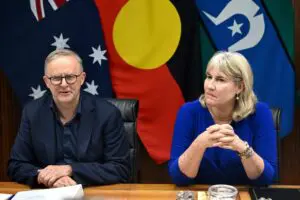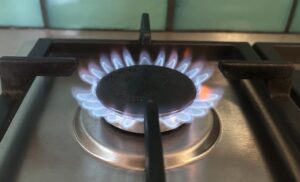On April 20, our PM Mr Turnbull, locked in a political hiatus on almost every front, announced that Canberra is to fund a feasibility study into a project that would essentially switch Tasmania’s hydro system from a base load system to a peak load system that feeds the nation.
It is important to emphasise, at this point, that this is about feasibility and comes at the behest of the Tasmania Premier searching for an infrastructure investment windfall.
Mechanics aside, the net result of their basic proposal would be that instead of Tasmania generating its own power requirements – while using Basslink to trade any surplus or shortfall (as we presently do) – the hydro system would be ramped up massively so that the Tasmanian system would export maximum power during peak times then virtually shut down the system and import power massively during off-peak periods.
There are so many implications to this that I will simply summarise a few of them here in dot points:
• Perhaps an easy way for ordinary citizens to visualize this fundamental operational change is to compare it to how Davey and Macquarie Streets in Hobart have been turned into virtual raceways, to handle ever growing peak traffic – to the extent that the state government has been recently leaning over Hobart council to hot them up even further by removing parking along those thoroughfares and restricting pedestrian crossovers.
• We need to keep in mind that Tasmania does not generate all of its own energy needs and is presently a net importer. A hotted up Tasmanian power system would not generate any more hydro renewable energy than it does, it would simply be turned into a buffer, importing power so as to release it later on at peak times. It’s a way of storing coal-fired power but labeling it as clean hydro power.
• The sales pitch being used – framing Tasmania as a ‘renewable energy engine’ for the nation – feeds a popular Tasmanian sentiment, but is somewhat dishonest. Extra power generated by the system would be simply converting imported coal-fired power into water storage then feeding it back to the Mainland at other times. That represents, at the very least, a twenty percent loss of energy just in transmission.
• The single existing Basslink interconnector is grossly insufficient to handle these projected loads, meaning that the entire enterprise hinges absolutely on the funding of a second and possibly third Basslink interconnector at about $1billion apiece. This cost, together with the cost of altering Tasmanian Hydro infrastructure, should not be viewed lightly. Cost would most likely be the killer.
• Renewable energy advocacy groups have been lobbying for a long time for the development of electricity storage to help cope with the intermittency of solar and wind power, so this scheme could theoretically be welcomed by some of those groups. However, it is important to understand that in the absence of truly massive investment in renewable energy generation there is no way the Snowy and Tasmanian hydro electric systems can absorb the amounts of power being purported unless that power is coal generated. The intent behind these schemes, for at least the medium future, is to enable more burning of coal.
• Though ‘pumped hydro’ has become in vogue of late, the Tasmanian hydro system already has significant capacity to generate peak power over sustained load and its water storages can cope with virtually any amount of short-term imported power without needing to augment this storage capacity with pumped storage dams. The main limitation to hotting the Tasmanian system up further is the number of generating sets at each power station and this would, no doubt, be under consideration.
• What are the implications for Tasmania? This is mostly guesswork right now. Not even Hydro Tasmania would have proposed configurations nutted out … though it has previously indicated that pumped hydro is not practical or sensible in the Tasmanian situation. However, we can safely identify two principle impacts, no matter how this mooted project would be specifically implemented.
1. Further loss of autonomy: By fully integrating into the national grid, Tasmanian energy consumers would become undifferentiated from those in Melbourne of Sydney. The state would lose much of its branding as a clean-green state supplying itself with hydro power. For the Tasmanian people this would also represent a further loss of pride and identity.
2. Radical changes to river system flows: Running the power stations at maximum output then backing them off means radical changes to downstream river flows. And this means, in turn, radical change to freshwater ecologies. The only way to ameliorate this would be to construct a series of buffer dams in wilderness rivers, below existing dams. I’m trying to imagine how ecologists and wilderness advocates would take to all this.
• The Tasmania public needs to be better informed on these implications before this notional scheme gets out of hand. Meanwhile, the proposal is so far fetched economically it’s not a good idea to start seeing it as a fait accompli. The Prime Minister has announced a feasibility study that’s all, just as he has announced the same with regard to augmenting the Snowy Scheme. Mr Turnbull dearly wants to be regarded as the infrastructure prime minister and to hang his coat on that nail.
• Ever since Tasmania ran out of rivers to dam and Hydro Tasmania wound down its dam making operations, environmental groups such as the Wilderness Society have turned their attention away from energy issues, not seeing dam building as a continuing threat to nature protection. I think we may see their interest suddenly re-ignited.
• The most important thing for the community to do, in the meantime, is to not accept the rhetoric that little Tasmania – producing less than five percent of the nation’s electricity, and not even being self sufficient – is going to be suddenly transformed to become a ‘powerhouse’ for the nation.
It’s probably smart political rhetoric on the part of Will Hodgman, but his main problem is that it is simply fanciful. The feasibility study is likely to show the rhetoric up as nothing more than wishful thinking – though we can probably expect a half-baked, face-saving outcome.
*Chris Harries is an environmental educator specialising in energy supply & demand issues. He is a member of the Climate Tasmania advisory body and drafted the original Tasmanian Environmental Law Handbook. He has been writing on social advocacy issues since the mid 1970s.
Source: Tasmanian Times. Reproduced with permission.











